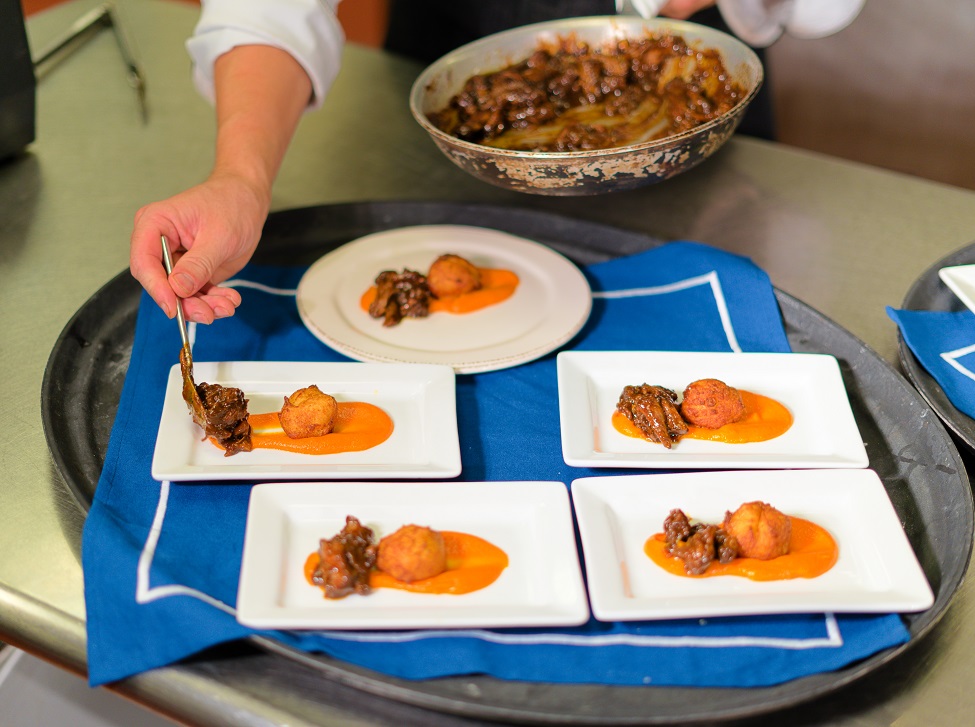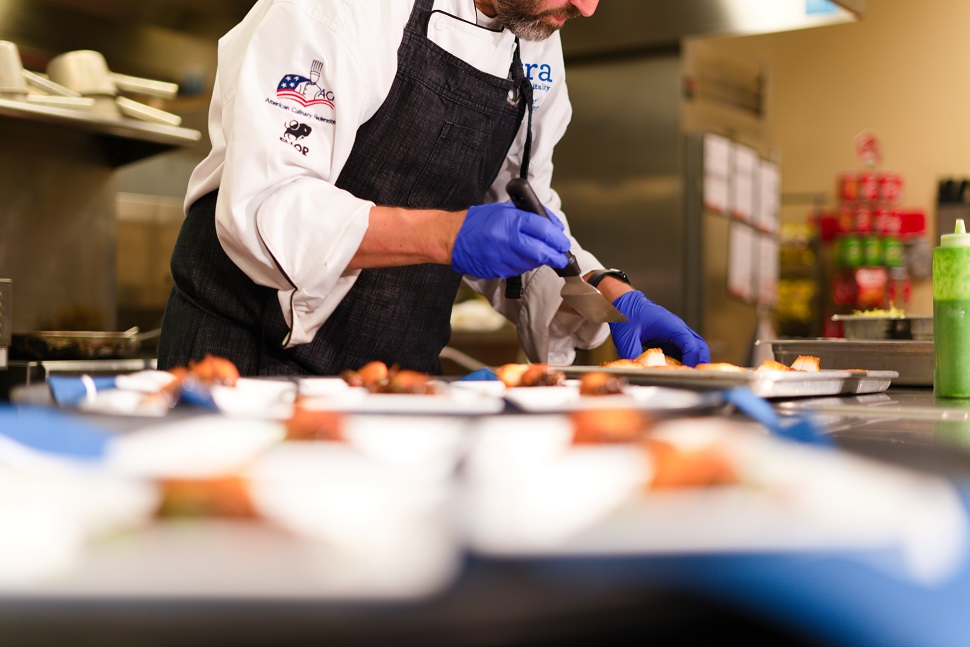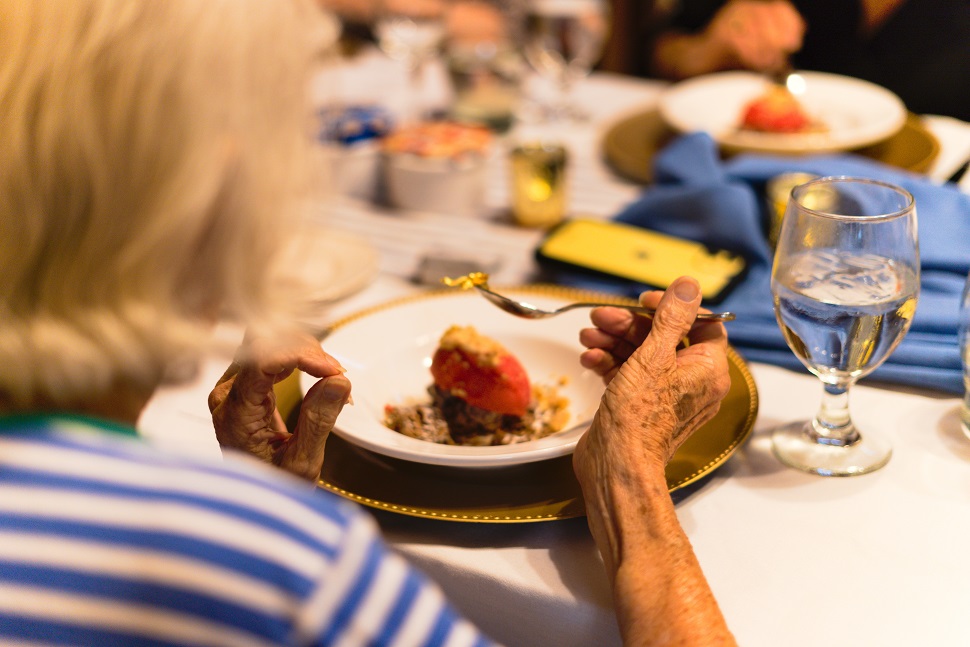Beyond Three Meals: Healthcare Foodservice Workers Week
Guest Blog: Contribution by LeadingAge PA Business Partner, Grace Zarnas-Hoyer, Manager of Communications, Cura Hospitality.
As we celebrate Healthcare Foodservice Workers Week, we are proud to recognize our front- and back-of-the-house dining teams that prepare and serve our older adults' daily meals. While food is one of the basic necessities of life, it also presents opportunities for us to experience the specialties of senior living chefs. Food is a celebration, a culinary adventure that brings us together, and it continues in aging services communities, giving residents something to look forward to beyond three meals a day.
Meeting the Demands
 The stigma associated with senior dining food service often brings to mind the familiar meal of meatloaf and mashed potatoes. In fact, it’s the complete opposite. Who would have thought that culinary creativity would be at the center of the plate in aging services? It’s becoming more mainstream as today’s residents are well-traveled, educated, and, in many cases, are still employed. They desire a dining experience that is diverse, flexible, nourishing, and multicultural. There’s a strong demand for global cuisine, ingredients that impact health and wellness, and, of course, the excitement about today’s delicious flavors and food trends that are presented in a unique and artistic way.
The stigma associated with senior dining food service often brings to mind the familiar meal of meatloaf and mashed potatoes. In fact, it’s the complete opposite. Who would have thought that culinary creativity would be at the center of the plate in aging services? It’s becoming more mainstream as today’s residents are well-traveled, educated, and, in many cases, are still employed. They desire a dining experience that is diverse, flexible, nourishing, and multicultural. There’s a strong demand for global cuisine, ingredients that impact health and wellness, and, of course, the excitement about today’s delicious flavors and food trends that are presented in a unique and artistic way.
Food Service Careers
From pub-style dining where residents can enjoy craft beers and game-day foods, to exclusive fine dining events, the aging services dining sector continues to evolve, attracting some of the top-classically trained chefs who offer a full menu of different styles of cuisines and accoutrements. Many of our culinary stars got their start in high school, where part-time after-school and summer employment evolved into a passion for caring through food. Advanced learning is also supported by communities that offer scholarships to educate in the culinary arts. Today’s aging services chefs are not only culinary caregivers; they relish this role in expanding the palette of their guests while creating engaging culinary experiences for older adults.
A Chef’s Table
Take, for example, the Chef’s Table, a unique, intimate, and engaging high-end tasting menu-style dining experience offered to residents at the Lutheran SeniorLife Passavant Community in Zelienople, Pa., to showcase the depth of culinary talent represented by Cura Hospitality executive, sous, and pastry chefs. This quarterly fine dining signature event, designed for 12 residents, features a six-course meal. Residents can socialize and taste a variety of cuisines during a themed meal. Some themes include wild game recipes that locally source elk, pheasant, and rabbit; Southwest and Native American heritage foods; Brazilian foods; or enjoying delicious French and Mediterranean-style cuisine prepared by executive chefs who have learned their trade at some of the top culinary schools!
A Culinary Education
While the Chef’s Table offers farm-to-table, contemporary, and authentic favorites from around the globe, it also offers an educational experience, where residents learn about the preparation and the story behind each dish. A recent event offered popular molecular gastronomy menu items that focus on the physical and chemical processes that arise when cooking. Sous-vide Duck Breast showcased the precision cooking aspect, where the low and slow sous vide technique results in exceptionally tender and flavorful meat. The liquid nitrogen frozen strawberry sorbet represents the playful side of molecular gastronomy, using rapid freezing to create smooth, creamy textures that are hard to achieve with traditional methods. During a future culinary tour of Asia, residents will experience more than just Chinese American foods; they will enjoy menu items from the Philippines and explore Thai and Korean foods too!
Aging Services Dining’s Future
Like many foodservice operations today, we will continue to feel the labor crunch. Technologies such as online ordering applications and robots are also revolutionizing the way residents are served in the dining room, supplementing employment while enhancing life around great food! However, these technologies cannot replace the human touch. Future residents are more worldly and will expect a level of food service that is healthier, engaging, and global, vs. the residents of yesteryear. In an area positioned for success, chefs look to senior dining as their stage to showcase their food talents for a great time and a memorable culinary experience!
 |
|
Photo Source: Cura Hospitality

